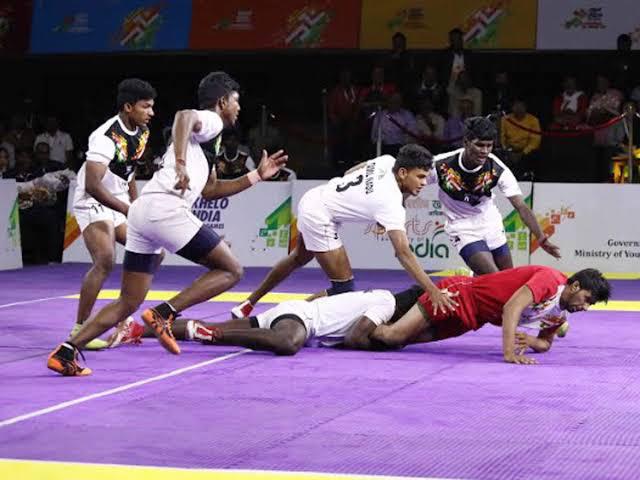
The check hook is one of the most effective weapons you have against aggressive opponents who want to run you over. It’s a technique that remains effective at the highest levels of boxing and mixed martial arts, and it lands with enough power to leave opponents unconscious.
Throwing a check hook involves throwing a lead hook as you pivot off the centerline. It’s boxing’s version of a matador masterfully evading a bull’s horn before finishing it off.
Pivoting while throwing the lead hook removes you from your opponent’s line of attack, while putting you in position to follow up with more strikes. The check hook comes from boxing, but it has been adopted by other striking arts like Muay Thai, Dutch Kickboxing, and MMA. The trick to making the check hook work for you is to wait until your opponent has committed to charging forward so you can use their momentum against them.
Pivot your lead leg as if you were pushing off on the ground, and turn your rear leg 45 to 90 degrees as you throw the hook.
Using The Check Hook To Neutralize Pressure Fighters
Pressure fighters love to lunge forward with big strikes, leaving them open to counters like the check hook.
A well-timed check hook can make your opponent miss and leave them off balance, opening them up for the lead hook and follow-up strikes. This technique turns your opponent’s pressure into your opportunity. You invite them in and make them pay for recklessly swarming you.
You become a matador while your opponent becomes a bull, and you sidestep at the last moment to avoid the charge while thrusting your weapon forward. Like a matador, you use your opponent’s momentum against them, making your hook land with considerably more power thanks to your opponent’s forward movement. It’s basic physics. It’s why head-on vehicle collisions are typically worse than cars hitting stationary cars or cars moving in the same direction.
How To Throw A Check Hook
Here’s the proper way to throw a check hook:
- Start in your fighting stance with your hand up.
- Wait for your opponent to commit to a big punch and throw a lead hook as you pivot.
- Plant your lead foot firmly when pivoting and push off it as you rotate your back foot.
- Aim to pivot your rear about 45 to 90 degrees. Anything more than that can throw you off balance.
Keep your elbows close to your body when throwing the lead hook, and keep your technique tight. The punch should be able to land before you complete your pivot. Drop your lead shoulder and throw the hook while turning your hips and torso into the punch to generate additional power.
Check Hooks In Action
Watch Floyd Mayweather’s fight against Ricky Hatton for a perfect illustration of what a well-executed check hook looks like. Hatton was an undefeated brawler heading into the contest, and Mayweather used the check hook to nullify his aggression and eventually bring the contest to an early end.
Another impressive example of the check hook is Israel Adesanya’s first fight against Robert Whittaker. Whittaker came out aggressively, but Adesanya countered with a check hook with his back against the cage, stunning Whittaker before putting him away with follow-up strikes. The check hook is one of your most effective weapons against aggressive opponents intent on closing the distance.
Mastering The Check Hook
Some of the ways you can practice the check hook until it becomes muscle memory include:
- Shadowboxing With Purpose: Visualize an opponent charging at you when shadowboxing and practice your check hook, making sure you turn your hips and torso when punching. Stay balanced the entire time. Focus on only the pivoting part if you find the technique challenging and eventually add the hook.
- Heavy Bag Drill: Push on a heavy bag so it’s swinging back and forth. Pivot out of the way when the bag swings toward you and throw a check hook. This helps to build the habit of pivoting and throwing a hook simultaneously, and the back gives you feedback when your timing is off, and you don’t pivot at the right moment.
- Pad Work: Have a training partner or instructor holding pads advance on you while you pivot out of the way and land a check hook. This gives you a more realistic feel of what performing the technique on real opponents is like.
- Angle Work: Practice circling and pivoting off your lead foot at different angles to find what works for you.
- Footwork Drills: Foot speed is crucial when throwing check hooks. Perform exercises like agility ladder drills and jump rope to improve your foot speed, which translates into quicker pivots. Timing your check hook correctly can only do so much if you can’t pivot out of the way fast enough.
Outsmart The Bull: Your Next Steps
Mastering the check hook requires a lot of practice to nail the footwork and timing, but it’s a powerful tool to have in your arsenal once you do. It gives you a proven and tested way to deal with charging opponents and use their momentum against them. You become the matador and turn opponents into mindless bulls who run right into your lead hook.
The check hook’s effectiveness isn’t limited to combat sports like boxing, Muay Thai, MMA, or Dutch kickboxing; it’s even more effective in self-defense situations. Attackers on the street have to close the distance on you, leaving them right open for the check hook. Untrained people have few defensive options against this technique.
You may also like:
5 Movement Drills To Improve Your Footwork In Boxing
Fear is a natural part of competition, especially in combat sports like Brazilian Jiu-Jitsu (BJJ), Muay Thai, boxing, and mixed martial arts (MMA). Whether you’re a first-time white belt entering your local tournament or a…
Everyone has a natural fighting style. Some instinctively look to bombard opponents with volume, while others prefer a more cautious approach. Some people feel more comfortable throwing strikes at attackers, while others prefer to wrestle…
Ask any coach or seasoned fighter, and they’ll tell you the same thing: your punches are only as effective as your footwork. Most people think boxing is all about fast jabs and powerful knockouts. While…
Your environment significantly influences what works and what doesn’t in boxing. Even something that might seem insignificant to casual boxing fans, like the size of a boxing ring, influences which tactics work best. Smaller rings…
If you’ve ever watched a fight and thought, “Wow, this guy never backs off?” You’ve witnessed pressure fighting in action. Pressure fighting in martial arts is the art of making your opponent miserable with constant…
Hard sparring sessions in martial arts can make you feel like you’ve just walked through a brick wall. You’ve given it your all, and your muscles are sending you a strongly worded memo saying that…
Getting stuck in side control is something many Brazilian Jiu-Jitsu beginners have in common. The bridge and roll is often the first reversal BJJ students learn, followed by basic bottom guard sweeps like the scissor…
Grip strength plays a crucial role in mixed martial arts (MMA) and many grappling styles like Brazilian Jiu-Jitsu and wrestling. It turns out that having a strong grip doesn’t just help you to open jars;…
Flexibility plays a crucial role in how well you can execute many fighting techniques. For example, you need a certain level of hip flexibility to throw high kicks in Muay Thai or to use the…
Martial arts training might be what you need if you’re interested in a more exciting way to rebuild that knee, shoulder, or back. Signing up for classes won’t automatically give you some magical ability to…
Any parent already knows that raising children can be as challenging as trying to juggle two flaming swords while blindfolded on a treadmill. Many are turning to martial arts classes to get their kids off…
In the ever-evolving world of BJJ, there has been a noticeable shift in how practitioners approach the ground game. Many practitioners now emphasize their leg lock game, which is now considered a must-learn across all…





![[WATCH] IND vs SA 2025: Umpire Rohan Pandit down in pain as Sanju Samson drive hits knee](https://www.babu88sports.com/wp-content/uploads/2025/12/watch-ind-vs-sa-2025-umpire-rohan-pandit-down-in-pain-as-sanju-samson-drive-hits-knee-360x180.jpg)





























